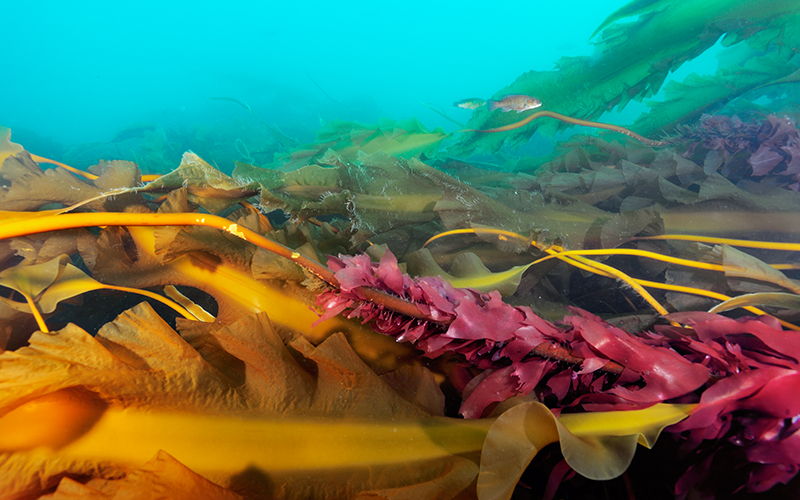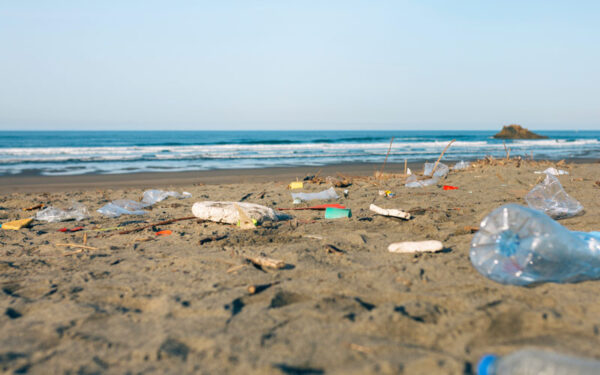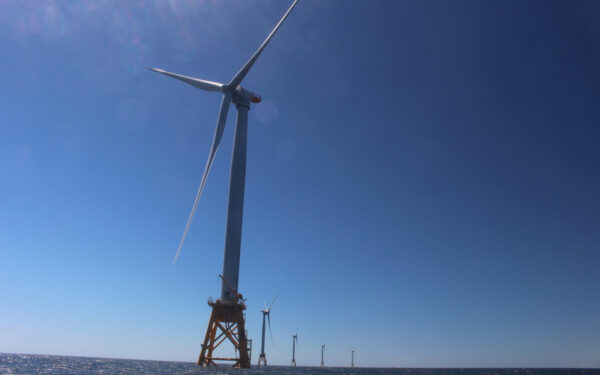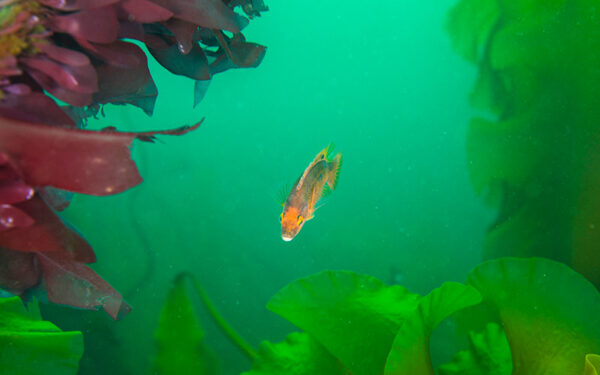
To protect biodiversity and build our ocean’s resilience to climate change we must protect much more of New England’s ocean – places like Cashes Ledge in the Gulf of Maine.
Whether it’s the lush kelp forest of Cashes Ledge or the rocky cliffs of an underwater canyon, protecting New England’s special underwater places is at the heart of our ocean conservation work. Just like rainforests and savannah grasslands on land, the ocean is a collection of different habitats and landscapes, home to interconnected plants and wildlife. In the Northeast Canyons and Seamounts Marine National Monument, ancient corals build the foundation of a deep-sea ecosystem. In the surface waters of the Great South Channel, tiny zooplankton known as copepods thrives and supports migrating North Atlantic right whales.
Part of CLF’s sustainable fisheries work is advocating for regional and federal fishery managers to protect more of New England’s ocean habitat. That work recently paid off when NOAA Fisheries approved two amendments for which we’ve been fighting. When enacted, the Deep-Sea Coral Amendment will protect more than 25,000 square miles of fragile seafloor habitat. And soon, a new management plan for Atlantic herring will create a 12-mile “buffer zone” along the coast from the Canadian border to Connecticut. This zone will prohibit the large mid-water trawlers from depleting coastal masses of Atlantic herring—a vital food source for many New England marine species.
But there’s still plenty of work to do. We know that to protect biodiversity and build our ocean’s resilience to climate change, we must protect much more of New England’s ocean.
July is Habitat Month at NOAA Fisheries, and, as we close out this month of celebration, we’re highlighting CLF’s ongoing ocean habitat protection work:
Defending the Northeast Canyons and Seamounts
In June, the Trump administration continued its attack on our protected lands and waters, declaring the Northeast Canyons and Seamounts Marine National Monument open to commercial fishing. CLF and partners, in response, filed a lawsuit challenging this illegal rollback of the monument’s core protections. The President does not have the authority to eliminate or significantly reduce protections in our national monuments. Permanently protected areas like the monuments are necessary to support a healthy ocean, and CLF will continue to fight for the protection of the Northeast Canyons and Seamounts – New England’s only marine national monument.
Saving the Last Cod Hotspots
A crucial part of our effort to end overfishing and rebuild Atlantic cod in New England is protecting the places where cod spawn, grow, and feed. We need broad protections, in space and time, in the Western Gulf of Maine to protect cod through their whole spawning season. We are also calling for the identification and protection of similar areas in other regions of New England’s ocean. Inadequate protection of cod spawning areas to date has impeded the species’ recovery in New England.
Re-establishing Healthy River Runs
A healthy ocean relies on abundant forage fish, species that are food for larger predatory fish. In New England, river herring and shad play a critical role as prey for cod, salmon, and striped bass, but their populations have dwindled over decades as dams blocked river access to spawning grounds. For years, CLF has worked to restore fish passage on rivers in coastal Maine to enhance the habitat of river herring and shad populations and enable them to rebuild healthy numbers. Construction crews are currently removing portions of the Saccarappa Dam to allow the Presumpscot River to return to its natural state.
Safe Spaces for Endangered Right Whales
The International Union for Conservation of Nature recently “uplisted” the North Atlantic right whale from endangered to critically endangered, one step away from extinction. With only about 400 right whales left on the planet, protecting the areas where they are found is crucial to their survival. This year, we won a lawsuit that required the removal of gillnet fishing gear, which poses an entanglement risk for right whales, from 3,000 nautical miles of ocean waters in southern New England. We are also collaborating with offshore wind developers to minimize and mitigate the potential impact of wind farm construction on right whales and their habitat in New England.
Protecting Cashes Ledge
Cashes Ledge, an underwater mountain range in the Gulf of Maine, is a biodiversity hotspot home to the largest cold-water kelp forest on the eastern seaboard. Myriad marine species call Cashes Ledge home, including cod, wolffish, blue sharks, rare sponges, humpback and right whales, and bluefin tuna.
While Cashes Ledge has been partially protected through fishery management regulations, these protections are not enough and can be removed at any time. As the Gulf of Maine warms faster than 99% of the world’s ocean, protecting special places like Cashes Ledge is critical to maintaining biodiversity and building resilient ecosystems. We are committed to permanently protecting Cashes Ledge and other important ecological areas in New England’s ocean.
Join Us to Protect New England’s Marine Habitat
We can only be successful with you by our side. Please, become a CLF member today and join our work to protect New England’s ocean.




